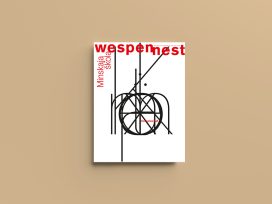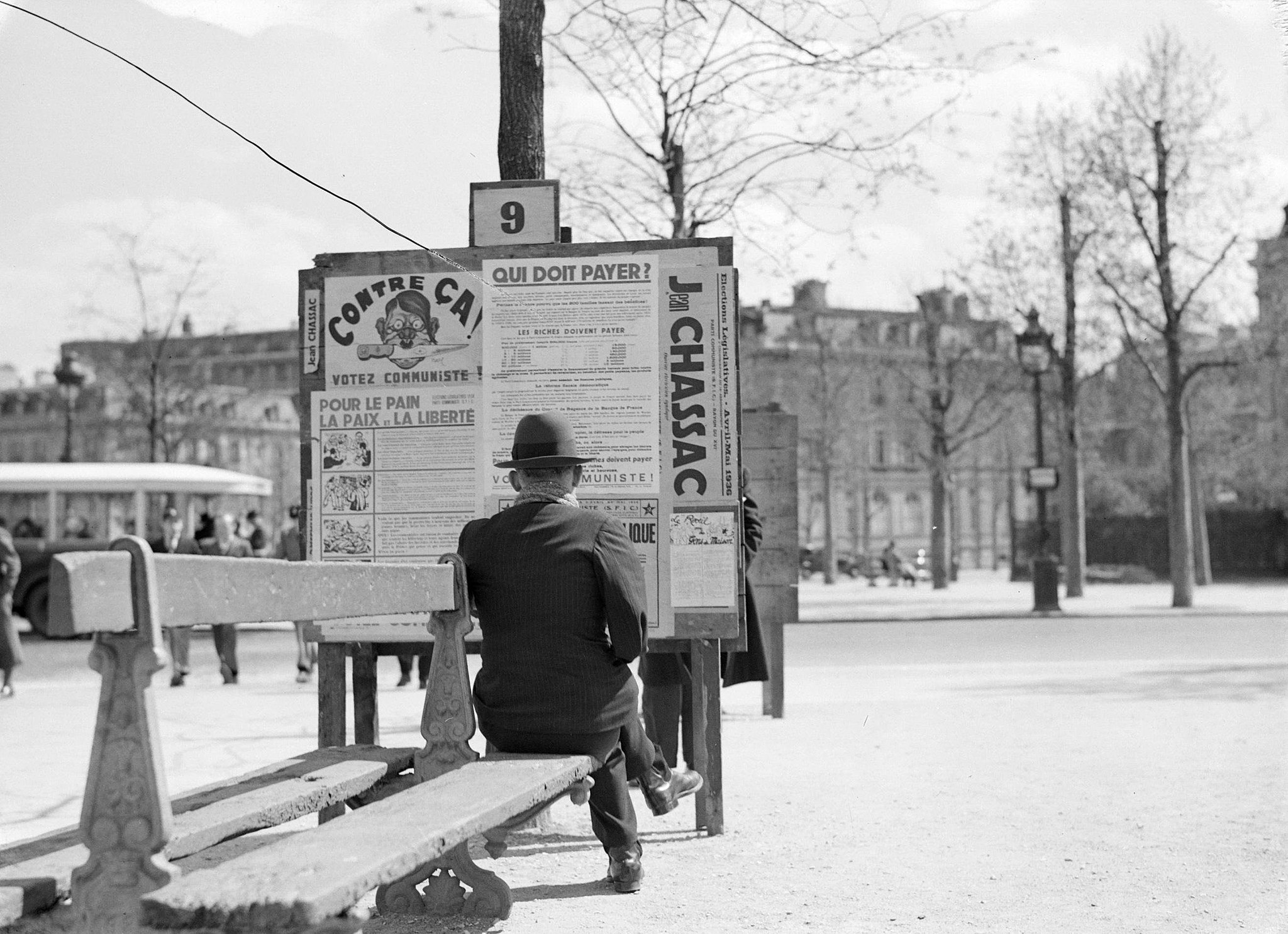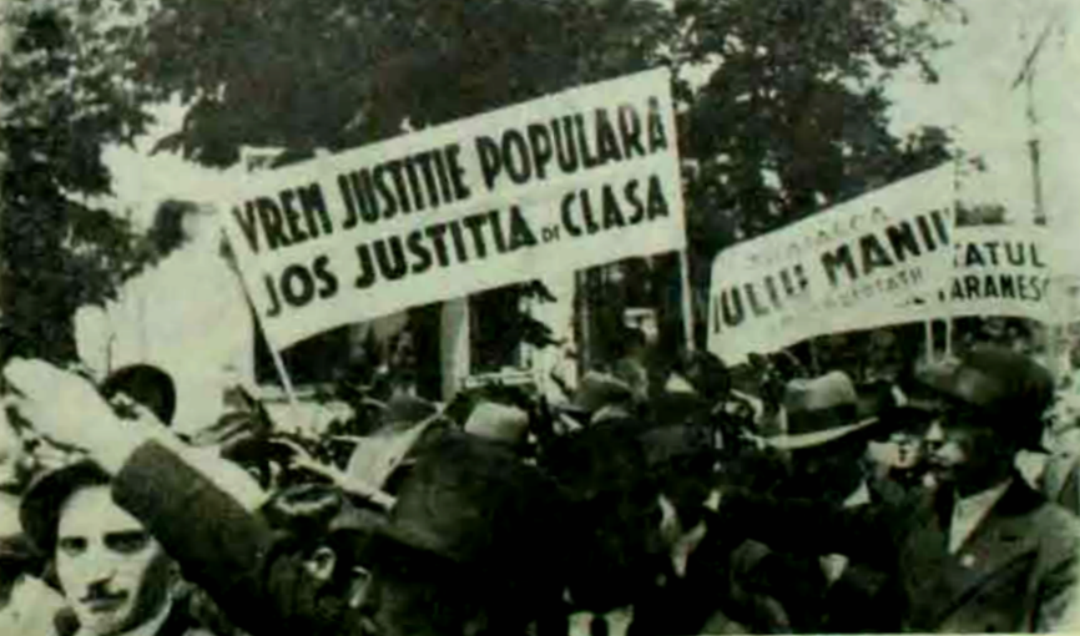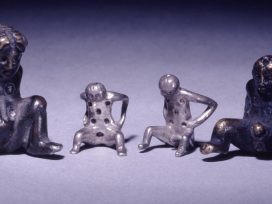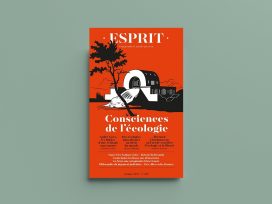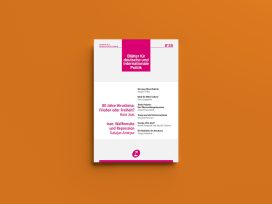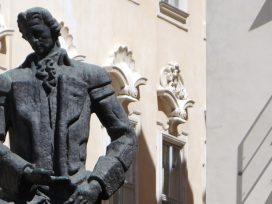In winter 1972–73 an American university student immersed himself in leftwing ideas. He paid attention to two books in particular, one by Georg Lukács, the other by Louis Althusser. The first led him to the writings of Romanian-French thinker Lucien Goldmann, a principle protagonist of Lukács’s ideas in post-World War II Paris. He was unreceptive to the second.
This student was already attracted to the humanism of Karl Marx’s youthful writings, especially The Philosophical and Economic Manuscripts of 1844. Marx’s notion of ‘alienated labour’ drew him almost naturally to Lukács’s History and Class Consciousness, a collection of essays that provoked clamour when first published in 1923. In it a Hungarian Marxist reinjected Hegelianism and classical German philosophical concepts into Marxism which then, as later, often lived in exhausted formulas. Most appealing was Lukács’s expansion of the idea of alienation into ‘reification’, a word that captured how human creations come to be perceived by their makers as ‘things’ in capitalist market societies. The labour power of workers became ‘things’ – commodities – too. Lukács had read this into Marx’s Capital of 1867 without having seen Marx’s still unpublished manuscripts.
The humanism of Lukács’s book, with its emphasis on subjectivity, consciousness and the need for working people to make the world they created their own, was compelling. Its philosophical power also seemed to speak to this student’s moment, when so much of the left thought in slogans and in the post-1968 turmoil had begun to unravel. However, this student – let’s call him Cohen – also determined more and more that Lukács’s obstinate Leninism marred the achievement of History and Class Consciousness and its efficacy in helping the left to new footings.
The other book had almost cult status. Althusser’s For Marx, published in 1965, was a key text of ‘structuralist Marxism’. It argued for ‘theoretical anti-humanism’, a phrase Cohen found off-putting. It reified what humanism meant and what it could mean by contending – over-philosophizing – that an ‘epistemological break’ separated the ‘young Marx’, who was concerned with bleary abstractions like alienation, from an older scientist of society and history. For Marx scorned what Cohen had found most appealing in Marx (and Lukács) and was, finally, a laboured justification of the Leninist belief in a political party – Althusser was a member of one – as the repository of all knowledge. Cohen thought that the point of leftwing politics was to make human lives better, much better, rather than elaborating formulations satisfying to intellectuals; and that ‘anti-humanism’ would alienate, inevitably, common men and women who ought to find their needs expressed in egalitarian ideas.
The two books stood in philosophical opposition to each other while their authors were similarly ensnared politically. At the age of 20, Cohen probably hadn’t sufficient philosophical acumen to ‘get’ it all, but this was the context in which he read an essay by Goldmann entitled ‘Reflections on History and Class Consciousness’. He discerned something urgent in it. It took advantage of Lukács’s achievement while transcending it. It recognized that many Marxist propositions, however insightful, couldn’t survive in a changed world. Yes, a left had to preoccupy itself with working and poor people, but no, the proletariat was not going to solve history’s riddles. Goldmann’s alternative, ‘revolutionary-reformism’, aimed at a market socialism based on ‘autogestion’, a self-managed egalitarian society. Cohen came to understand that this also meant that reification, entwined inescapably with markets, would never be fully banished.
But putting up with some reification, all while identifying and criticizing unflinchingly its debilitations, seemed better than Stalin. It felt urgent for the left to see itself, as Goldmann asserted, as heir to what was best in liberalism. This did not mean marketization of everything, a fetish recently called neoliberalism. It meant individual liberty, tolerance and equality before the law – but socialized.
After reading Goldmann’s essay, Cohen explored his books, beginning with Mensch, Gemeinschaft und Welt in der Philosophie Immanuel Kants. The title alone allured. Then came Les Sciences humanes et philosophie, which insisted on distinguishing humanistic studies, animated by a concern for subjectivity and ‘consciousness’, from positivism, which reduced so many dimensions of life, culture and history to ‘facts’ assembled through misbegotten assertions of scientific objectivity. Cohen was convinced to write on Goldmann after reading his treatment of Pascal and Racine in Le Dieu caché and his essays on reification and psychologist Jean Piaget in Recherches dialectiques. As he liked the title of Goldmann’s book on Kant, so the playful, serious designation ‘Recherches’ attracted him; it meant in French quests or studies.
Le Dieu caché synthesized insights drawn from Lukács’s theory of social consciousness and Piaget’s epistemology. These configured in what Goldmann later called common ‘mental structures’ which, in turn, took cogent form in worldviews that animated works of cultural creation. Goldmann looked at 17th-century France and found a common tragic ‘vision du monde’ in Pascal’s Pensées and Racine’s theatre. He came to speak of ‘transindividual subjects’, a multiplicity of individuals who shared an ensemble of ‘non-conscious’ forms of learning and understanding due to common social and historical circumstances. By using ‘transindividual’ and ‘nonconscious’ he aimed to distinguish his idea from ‘collective’ subjects, totalities in which individuals vanished, and from Freud’s ‘Unconscious’. The ‘mental structures’ of a ‘transindividual subject’ become a coherent vision du monde animating great cultural works.
In Goldmann’s interpretation, France’s noblesse de robe (judicial nobility) was thrown into crisis when its worldly role, once vital to a centralizing monarchy, was sheared by that same regime as its own needs changed. A tragic vision formed through Jansenism, an Augustinian religious movement that brawled theologically with Jesuits, then the dominant force of French Church and State. That vision crystallized in Pascal and Racine and was key to understanding their works. Pascal had embraced the Jansenists and lived towards the end of his life at their abbey at Port-Royale-des-Champs. He famously defended the Jansenist leader Antoine Arnauld when Jesuits tried him at the Sorbonne. Racine, Pascal’s junior by over a decade, was educated at the abbey. A shared vision allowed understanding and explanation of philosophy and plays. Goldmann posed questions similar to those of Lukács and Theodor W. Adorno about humanism found in the late 18th and early 19th-centuries in a poet (Goethe), a philosopher (Hegel) and a composer (Beethoven). Goldmann provided a complicated contrast between a tragic vision, which said ‘Yes and No’ in 17th-century France, and ‘dialectical hope’ in German humanism a century and a half later.
The idea of a ‘transindividual’ appealed to Cohen because experiences in the left and the counterculture of the late 1960s and early 1970s had left him uncomfortable with what seemed an often rampant preoccupation with the first person singular. He was also struck by Goldmann’s contentions that Pascal was the first modern dialectician and that Marxist humanism did not guarantee humanity’s future but consisted in a wager on it akin to Pascal’s on the existence of God. This wagering spirit was also that of Goethe’s Faust. Mephistopheles must forever serve this scholar-philosopher’s ambition to make all human experience his own, unless Faust wants to hold fast to a moment in time and place. If he stops seeking to go beyond himself, Faust loses his soul.
Faust means ‘fist’ and Goldmann, remarkably, formulated his idea of the wager in the mid-20th century, after Europe’s pounding by Hitler and Stalin – and despite it. By the time Cohen had finished writing his book on Goldmann, later in the twentieth century, it was obvious that a Marxist wager could not be won. Nonetheless, humanity is all humans have; the tension between tragedy and hope had to live on, but without illusions.
In the 1960s Goldmann renamed his efforts ‘genetic structuralism’ to differentiate them – by an insistence on a dialectic between history and mental, sociological and economic structures – from the methods of structuralism. He elaborated a theory of ‘homologies’ between structures of culture and those of historical realities in his often schematic book Pour une sociologie du roman. His methodological itinerary shifted as he turned from the 17th century to the 20th., although his insistent humanism contrasted to Foucault, Althusser, Derrida and Lacan.
II.
Goldmann’s books and essays should be read today for the ideas he engaged and developed: world-views, mental structures and social consciousness; tragic and dialectical visions, humanism, totality and a wager; genetic structuralism and homologies; transindividual subjects, the individual-in-community, autogestion and liberal socialism. These preoccupied Cohen when he made his first research trip to Paris in 1980, keen to discuss them with people who had worked with Goldmann. He met Goldmann’s widow, Annie, a distinguished sociologist of film, who gave him access to her archives, filled with manuscripts and correspondence. He discussed Pascal, Racine and Kant with Henri Gouhier and Maurice de Gandillac, respectively ‘grand old men’ of 17th-century studies and German culture (Goldmann had studied with them). A meeting with Piaget in Geneva was cancelled when the psychologist took ill. Back in Paris, Cohen had dialogues with the remarkably cosmopolitan ensemble of Goldmann’s former students: Youssef Ishaghpour, an Iran-born culture critic; Michael Löwy, a Brazil-born Trotskyist scholar; Sami Naïr, an Algeria-born political scientist.
There were conversations with Henri Lefebvre and André Gorz. Meeting Lefebvre was like encountering the intellectual history of France’s 20th-century left in one person. In 1934, he was the first translator into French of Marx’s ‘Alienated Labour’ essay; he had written on Pascal (he disagreed with Goldmann’s approach), opposed Althusser’s ‘theoretical anti-humanism’ (for reasons similar to those of Goldmann), and inspired key activists in the student rebellion of May 1968. He had had a famously complicated relationship with the French Communist party, and a difficult friendship with Goldmann. Gorz, an existential leftist, was one of the chief theoreticians of the French New Left. He had argued for the ‘revolutionary reformist’ alternative to Marxism that Goldmann adopted.
One humid Paris evening, Cohen met Gorz at the offices of the weekly Nouvel Observateur. Curious about Cohen’s project, he noted that he had not really known Goldmann personally. After discussing the 1960s, Gorz suddenly changed the subject. He asked his interlocutor if he read science fiction. ‘No, the genre rarely attracts me. I’ve been much more interested in what Lukács and Goldmann wrote – often in disagreement – about realism in literature and art.’ But Cohen appreciated a certain irony in Gorz’s insistence on the importance of Philip K. Dick in imagining human prospects and risks, good and bad. It was curious and thought-provoking to suppose science fiction and realism as comrades. After all, Utopia was an old genre in leftwing literature, and also Dystopia. Years later, Cohen recalled Gorz’s claims when he considered how the future was represented in Stanley Kubrik’s and Arthur C. Clarke’s 2001: A Space Odyssey together with issues raised for humanism and the idea of reification by the development of Artificial Intelligence. Think of the computer HAL in the film.
III.
Close reading of Goldmann’s writings together with dialogues in Paris (and more interviews in 1987) permitted Cohen to map out an intellectual itinerary from the mid-1940s through the 1960s. Cohen had taken seriously Goldmann’s stricture against using biography to understand an author’s works, but he began to think it needed amendment.
True, Goldmann’s method had been fecund in its use of the ideas of transindividual mental structures and worldviews. Yet if applied to Goldmann, these did not seem to account sufficiently for the impact of a life’s accidents – those of birth in a time and place, of specific circumstances and events. Exploring Goldmann’s journey compelled Cohen to complicate the use of transindividual worldviews. He still found it indispensable to delineate mental structures and world-views embedded in texts, but thought that Goldmann’s writings suggested that more was needed in explaining an individual’s embrace of a world-view. Something akin to investigative journalism was needed to answer this question. The results are in The Wager of Lucien Goldmann, but not how they were acquired.
Goldmann’s Romanian years remained mostly opaque. But his reticence suggested that something telling must have happened in them. For example, he didn’t detail his early education or how, when a Bucharest law student in the early 1930s, he was chased from Communist circles after being accused, it seems, of anti-Stalinism and Trotskyism. When Cohen began his project, it was improbable that much information could be secured. The only possible source was aging Communists living in megalomaniacal Nicolae Ceausescu’s fierce police-state. Cohen did acquire names of likely Goldmann acquaintances there and sent letters but, not surprisingly received no replies. He interviewed some elderly Romanians living in the US and Paris who knew Goldmann in Botoșani (where he spent his youth) and Bucharest, but the story remained sketchy.
Cohen inferred mental structures (in a Goldmannian way) from Goldmann’s writings. They indicated continuity in certain themes, especially the idea of ‘individual-in-a-community’. This idea was implied by the preoccupations – humanity, community, the universe – of his book on Kant and were also suggested in his treatment of Jansenist factionalism in Le Dieu caché. Goldmann’s writing on these had a knowing flavour, perhaps that of someone who had experienced sectarian squabbles, maybe of Stalinists and Trotskyists. Cohen couldn’t but associate the depiction of Jansenist factions and their persecution by the state and Jesuits with the Moscow trials and Stalin’s war on Trotskyists.
Further conjecture pointed to the relation between Stalinism and a transindividual community, the protagonist of La Condition humaine in Goldmann’s reading of Malraux’s novel. Doomed militants try to live out their ideals during the 1927 Shanghai Uprising and are trapped in impossible, tragic circumstances. They are betrayed by the Comintern (read: Stalinism), whose directives serve Soviet interests rather than true revolutionary (read: Trotskyist) vision. The consequence is slaughter by nationalists. On behalf of this community, the novel said yes and no to the world at once. Cohen supposed that Goldmann’s own mental structures linked militants exploited by Moscow and then sacrificed, to the noblesse de robe, exploited and then cast off by absolutism.
Cohen hunted for people who knew Goldmann during his first years in France after exiting Romania in 1934. Perhaps he had confided his experiences to someone. Little came of this endeavour until Cohen was directed to Budapest-born Joseph Gabel, a sociologist who had written on Karl Mannheim and on reification. He had been Goldmann’s friend in Paris and fled to Toulouse with him after Germany invaded in 1940. Cohen called him and was a little startled when told: ‘Meet me tomorrow at 16 h. at Deux Magots. I am easy to recognize. I am obese.’
Cohen arrived at the famous cafe where he encountered a man as thoughtful and generous as truthful about his girth. Gabel spoke about poor, student outsiders surviving in the Left Bank and among refugees in Toulouse. At one point, Cohen said: ‘Goldmann’s first book, on Kant, was dedicated to a woman named Duclos, did you know her?’ ‘She was very beautiful and intelligent. Half the men in Toulouse were in love with her. Goldmann was. They had many conversations about Kant and philosophy.’ ‘Is she alive?’ ‘I think so. She joined the Resistance, Goldmann fled to Switzerland. He was terribly disappointed when, after the war, she married a doctor named Garepuy, who was head of her Maquis unit and briefly, after the war, a high official under a Communist minister of health.’
The next morning Cohen obtained France’s medical directory in a post office and called every physician in the Toulouse area named Garepuy and inquired until one said ‘C’est moi.’ He asked to speak to his wife and she, surprised but moved, invited him to visit. He flew to Toulouse and spent a day with an elderly couple for whom the Resistance had defined their lives. Finally, she took Cohen for a walk to see the city’s famous cathedral and talked about her friendship with Goldmann. They went to a shop to photocopy the contents of an envelope she was carrying with letters by Goldmann from 1945.
There was nothing in them about Romania but Cohen had begun to piece together Goldmann’s years there, thanks to an accident.
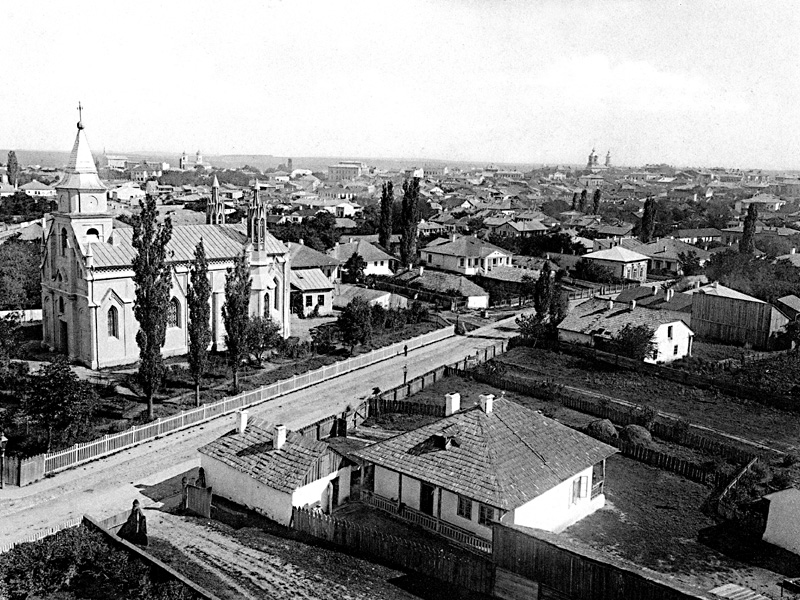
Botoșani ca. 1900, the town in Romania in which Goldmann grew up. Image by Alexandru Antoniu via Wikimedia commons.
IV.
It happened during a conversation at Harvard in 1979. Cohen spent an afternoon there in conversation with Menachem Brinker, a visiting Israeli philosopher and critic who had written on Sartre. Suddenly, while talking about France’s intellectual world and Goldmann’s criticisms of existentialism, Brinker, who had once been a shepherd on a kibbutz, asked: ‘Did you know that Goldmann was in Ha-Shomer ha-tsair [‘The Young Guard’] in Romania?’
Cohen had not known but was familiar with this youth movement’s history – its pre-World War I romanticism, influenced by German youth movements like the Wandervogel, and its melding of Zionism and Marxism between 1927 and 1930. This was, it turned out, precisely when Goldmann was a member. He also knew that Ha-Shomer ha-Tsair provided young Jews in an antisemitic world with an intense education devoted to the idea that individuals could realize themselves only in a community. For members, this quest meant finding a way to be whole in what seemed to be an ever fragmenting world. (Two decades earlier in Budapest, a romantic and anti-capitalist – but not yet Marxist – cultural critic named Lukács was similarly preoccupied.) The ideal of individual-in-community – a transindividual one – bore affinity to Hegel’s claim, in The Phenomenology of Spirit, a book decisive in Marx’s development, that an ‘I’ was realized in a ‘We’; it raised questions posed by the idea of a ‘social a priori’ in Max Adler’s Kantian Marxism, and suggests why Piaget interested Goldmann.
A new possibility opened thanks to lunch at Harvard. Ha-Shomer ha-Tsair in Botoșani had split up in 1930 and roughly half its members went to Palestine. Might some of them be in Israel? Yes, was the response to Cohen’s letter to the movement’s archives. In that same summer of 1980, in between conversations in Paris about Pascal, Racine and autogestion, he flew to Tel Aviv to interview about a half dozen people who had known Goldmann. It was possible to begin reconstructing his life in Romania, and the education in Marxism and philosophy he received in Ha-Shomer ha-Tsair. Yet Goldmann’s experiences in Bucharest remained allusive. Cohen spent time working on subjects other than Goldmann, but returned to him during a sabbatical in Paris. Assuming nothing more could be discovered, he began to finalize his book. But then History intervened.
IV.
One evening in March 1989, the phone rang in the tiny apartment that Cohen had rented near the Sorbonne. The call was from one of the ‘New York Intellectuals’, the social and literary critic Irving Howe. Once a Trotskyist, later a liberal socialist, he was the central figure in founding Dissent Magazine in New York in 1954. This intellectual review, for which Cohen had been writing for some years, was renowned as a leftwing forum that smuggled out and published east European dissidents. For its New York writers, Orwell’s Homage to Catalonia had always remained urgent – not the testaments of Marxism-Leninism. ‘We want you go to Budapest and to write about what is happening in eastern Europe,’ said Howe.
Cohen couldn’t say no and went to interview dissidents, nationalists, liberals, antisemites and communists as Hungary’s one-party rule withered away. In December he went again and also to east Berlin, where he was when Ceausescu was overthrown and executed. In Budapest the following week he interviewed an old regime henchman named Robert Ribansky, who had helped stage-manage the trials and hangings of the leaders of Hungary’s 1956 Revolution. At one point he asked Cohen: ‘What do you think of what they did to Ceausescu?’ Knowing that the important thing was to keep the interviewee talking, Cohen observed vaporously that ‘many things happen in heated moments’. The response: ‘Well, by contrast to what happened to Ceausescu, we in Hungary gave fair trials to the counter-revolutionaries of 1956.’
Ceausescu’s fate brought the possibility of finding out what had happened to Goldmann six decades earlier. Cohen returned to New York, wrote his Dissent article, consulted with an exiled Romanian political scientist and in June flew to Bucharest (via Israel). On the way he pondered how to assess prospective interviewees. There were questions of memory. This one might have political or vain reasons to adjust recollections. That one might be influenced by recent turmoil. He decided to trust only what he learned from multiple sources or seemed convincing given what he already knew.
V.
I arrived in a wounded city. There had been violent clashes between miners and protesters only days before. Ceausescu’s overthrow five months earlier, and his regime’s lingering stench, seemed ever present. Before I settled into my work I spent an afternoon wandering in the company of a Romanian translator of Plato, whom a friend suggested I meet. This man of cultural intelligence and sardonic wit told me that a serious scholar in Ceausescu’s Romania chose subjects as distant from the present as possible. We crossed Gheorghiu-Dej Square, named for Communist Romania’s first leader (it was later renamed Revolution Square). Bullet holes from the revolution’s crossfire still pock-marked buildings. Here was the charred secret police office; there was the balcony from which Ceausescu fled after jeers interrupted his last speech. That was the old Royal Palace. Across the plaza: the Athénée Palace Hotel which, although then seedy, had once been a luxury lair for spies – just when Goldmann was a poor student in the city. My companion gestured at the sites and said, ‘You know, my country is immersed in one of the great questions of philosophy and religion.’ ‘Which?’ ‘Is there life after death?’
VI.
Most interviews were conducted in French, a language widely known by educated people from Goldmann’s generation. Translators had to be avoided; the presence of an unknown third party could shape responses by veterans of an incessantly conspiratorial world. Some had lived underground before World War II, some had been in Moscow or in concentrations camps during it, only to achieve high ranks afterwards in a dictatorship. They were, in fact, all welcoming; but I was on constant guard against history-as-rumour.
One of the last interviews seemed to bring past and present together. It was with Leonte Răutu, who had shared a dormitory room with Goldmann before playing an ugly role in Stalinizing the underground Communist Party. He was a principal ideologist after it came to power and was known as the ‘Zhdanov of Romania’ because he enforced thuggish Stalinist cultural policies. Răutu’s career in heavy-handed agitprop contrasted dramatically to Goldmann’s efforts, in another part of the world, to fashion an open Marxist humanism.
When I arrived at his comfortable quarters outside the city centre, in a district that had been for party leaders, I found a man as grey as the politburo portraits that once speckled eastern European countries. A Russian edition of Lenin’s Complete Works lined the shelves behind him. Răutu told me about his brief time as the roommate of a vivacious, intellectually hungry young Goldmann and his eviction from Communist circles. His accounts mostly elaborated on or confirmed what I heard from others. I had a sense of guile in his replies, but couldn’t specify it. When I was sure I could learn nothing more about Goldmann I asked: ‘Can I raise a naïve American question that has nothing to do with Goldmann?’ Răutu squinted.
‘In 1936, ’37, and ’38, during the Moscow Trials,’ I queried, ‘did you really believe Stalin’s charges against Zinoviev, Kamenev and Bukharin? Did you believe that all those old Bolsheviks whom Stalin had shot were really secret saboteurs in the pay of western banks and imperialism?’
‘Imagine that you are a Communist in Bucharest then, not New York or Paris,’ he replied. ‘Fascism is everywhere. You are illegal. You don’t have political options. Only the Communist party will have you.’ Here he was alluding, a little deceptively, to the fact that he was a Jew, born Lev Oigenstein at a time when antisemitism permeated Romanian politics. He didn’t mention that his fidelity to the Party began in 1929 (not in the mid-1930s) and that he had always been stand-offish about his origins. ‘A Communist reading the bourgeois press here in the 1930s knew it lied repeatedly about you. The West wasn’t helping Spain. Moscow alone is helping you. What do you believe?’ The obvious conclusion: it did not matter. That hardly justifies what he and associates did in power. Yet it was not an unreasonable explanation, even – or least of all – of behaviour in a world of prevarication and self-deceptions. Still, on my way back to my hotel I noted that I was glad to have been asking him questions in 1990 rather than being quizzed by him decades earlier.
VII.
A few weeks later, in mid-July, I went to Bucharest’s Otopeni airport to fly to Paris. Disorder reigned in the inefficient terminal. Only one security scanner functioned and a long line of passengers sweated in summer heat waiting to pass through. There were multiple announcements of flight delays. I finally found myself in the departure lounge between a French businessman who had come to Romania to check on his investments in a shoe factory made before Ceausescu’s fall, and a fellow who announced that he was Andrei Codrescu, a Romanian-born poet who had lived in the US.
‘How did political upheaval effect your employees?’, I asked the businessman. ‘Not much that I saw,’ was the unedifying reply. Codrescu eavesdropped and queried why I was in Romania. I explained that I had been researching Goldmann’s early years and had interviewed old communists like Răutu about his purge from their circles. Codrescu showed no interested in Goldmann’s ideas, even his sociology of literature. Our two-minute exchange was disrupted when the loudspeaker announced the cancellation of my flight. I had to return to Bucharest and left the businessman and Codrescu in the lounge. I spent the evening with stranded French journalists celebrating Bastille Day in the bar of the Intercontinental Hotel.
About a year later I stopped in a Manhattan bookstore on my way to meet Irving Howe to discuss Dissent’s coverage of Russia and eastern Europe. I discovered there a book on the Romanian revolution, just published, by the fellow I had met while I waited for my cancelled flight to Paris. In it, Codrescu wrote that he had flown to Bucharest for ‘three cramped hours from Paris’ listening ‘to an obnoxious professor … who was writing a book on the Romanian Communist Lucian Goldmann’. His besieger planned to interview ‘Goldmann’s old Communist pals’.
Isn’t it ironic, Codrescu claimed to have asked this ‘Brooklyn College’ professor ,‘that the only Marxists left are American academics?’ The professor, he wrote, explained how good aims had been frustrated and Marx misunderstood, and so ‘I tuned him out, but he continued riffing in French to a young guy who was going to Bucharest to buy cheap Romanian shoes for resale in France’. Codrescu concluded: ‘There you have it … Between these two clowns lies the whole story.’ He did not elaborate on how a professor from the other side of the globe – or a businessman from the other side of Europe – comprised Romania’s ‘whole story’, let alone its woes.
I mentioned it to Howe, noting that, oddly, Răutu was somehow more truthful than Codrescu. The latter’s remark about Marxist academics was a commonplace among anti-communist exiles; he invented a plane journey with me, his report of our brief airport conversation misrepresented what I told him, and he got my academic affiliation wrong. ‘These eastern European regimes blistered the intellects of anti-communists no less than communists,’ I remarked. ‘Get used to it,’ said Howe, who had recently asked me to be his co-editor.
XIII.
My inquiries in Romania comprised the last chapter of my search for Lucien Goldmann and allowed me to write the first chapter of my book. I left Bucharest contemplating how to convey all that I heard there, in France and in Israel. And I asked myself: What now of Goldmann’s wager? To what extent can – or should – it be reinvented after the worlds in which it was born were gone – happily so? Liberal social egalitarianism must have a future. What does it mean to have a left that learns?
